| Mission type | Earth observation satellite [1] |
|---|---|
| Operator | NARSS |
| COSPAR ID | 2019-008A |
| SATCAT no. | 44047 |
| Website | www |
| Mission duration | Planned: 11 years |
| Spacecraft properties | |
| Bus | 559GK |
| Manufacturer | RKK Energia |
| Start of mission | |
| Launch date | February 21, 2019, 16:47 UTC [2] |
| Rocket | Soyuz-2.1b Fregat-M |
| Launch site | Baikonur 31/6 [3] |
| Contractor | Roscosmos |
| Orbital parameters | |
| Reference system | Geocentric |
| Regime | Sun-Synchronous |
| Altitude | 668 kilometres (415 mi) |
| Main | |
| Name | Multispectral imager (MSI) |
| Resolution | 1 metre (3 ft 3 in) (Pan) 4 metres (13 ft) (MS) [4] |
EgyptSat | |
EgyptSat-A or MisrSat A is Egypt's third Earth observation satellite following the EgyptSat 1 launched in 2007 and EgyptSat 2 launched in 2014. [5] This satellite was built by the Egyptian National Authority for Remote Sensing and Space Sciences Jointly with Russian RKK Energia while the imaging payload was developed by OAO Peleng and NIRUP Geoinformatsionnye Sistemy in Belarus. [6]

The Meteor spacecraft are weather observation satellites launched by the Soviet Union and Russia. The Meteor satellite series was initially developed during the 1960s. The Meteor satellites were designed to monitor atmospheric and sea-surface temperatures, humidity, radiation, sea ice conditions, snow-cover, and clouds.
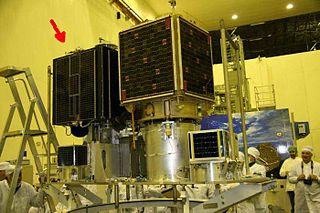
EgyptSat 1 or MisrSat-1 was Egypt's first Earth remote sensing satellite. This satellite was jointly built by Egypt's National Authority for Remote Sensing and Space Sciences together with the Yuzhnoye Design Bureau in Ukraine and was launched on board a Dnepr rocket on 17 April 2007 from the Baikonur Cosmodrome.

Soyuz-2 is a modernised version of the Soviet Soyuz rocket. In its basic form, it is a three-stage launch vehicle for placing payloads into low Earth orbit. Compared to the previous versions of the Soyuz, the first-stage boosters and two core stages feature uprated engines with improved injection systems. Digital flight control and telemetry systems allow the rocket to be launched from a fixed launch platform, whereas the launch platforms for earlier Soyuz rockets had to be rotated as the rocket could not perform a roll to change its heading in flight.
The Briz-K, Briz-KM and Briz-M are Russian liquid-propellant rocket orbit insertion upper stages manufactured by Khrunichev State Research and Production Space Center and used on the Proton-M and Angara A5. The upper stages were also used on Rokot, one of Russia's smaller launchers, before its retirement in 2019.

The year 2011 saw a number of significant events in spaceflight, including the retirement of NASA's Space Shuttle after its final flight in July 2011, and the launch of China's first space station module, Tiangong-1, in September. A total of 84 orbital launches were conducted over the course of the year, of which 78 were successful. Russia, China and the United States conducted the majority of the year's orbital launches, with 35, 19 and 18 launches respectively; 2011 marked the first year that China conducted more successful launches than the United States. Seven crewed missions were launched into orbit during 2011, carrying a total of 28 astronauts to the International Space Station. Additionally, the Zenit-3F and Long March 2F/G carrier rockets made their maiden flights in 2011, while the Delta II Heavy made its last.
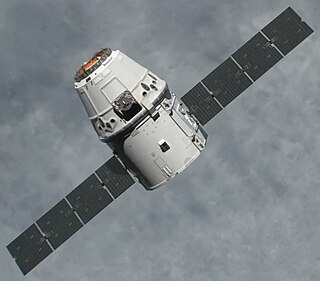
The year 2012 saw a number of significant events in spaceflight. In May and October, the first Commercial Orbital Transportation Services resupply missions took place, during which the SpaceX Dragon became the first private spacecraft to dock with the International Space Station (ISS). In June, China launched the crewed Shenzhou 9 orbital mission, and North Korea achieved its first successful orbital launch in December. 2012 also saw China's first successful asteroid exploration mission, and the landing of NASA's Curiosity rover on Mars. The Vega and Unha-3 rockets made their maiden flights in 2012, while the Proton-K made its last.
The National Space Agency of the Republic of Kazakhstan, also known as KazCosmos, or KazKosmos, is Kazakhstan's national space agency, and was officially established on 27 March 2007.
The Geo-IK-2 is a Russian series of new generation military geodesy satellites replacing the Soviet Union's Geo-IK and Sfera constellations. They are intended to be used to create high precision three-dimensional maps of the Earth's surface, and to monitor plate tectonics. The satellites are produced by ISS Reshetnev, and have a mass of around 1,400 kilograms (3,100 lb). They operate in a circular orbit at an altitude of around 1,000 kilometres (620 mi) above the Earth's surface.

Several new rockets and spaceports began operations in 2016.
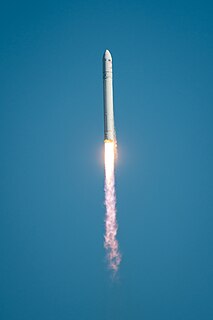
In 2013, the maiden spaceflight of the Orbital Sciences' Antares launch vehicle, designated A-ONE, took place on 13 April. Orbital Science also launched its first spacecraft, Cygnus, that docked with the International Space Station in late September 2013.

This article documents notable spaceflight events during the year 2019.

Notable spaceflight activities in 2017 included the maiden flight of India's Geosynchronous Satellite Launch Vehicle Mark III on 5 June and the first suborbital test of Rocket Lab's Electron rocket, inaugurating the Mahia spaceport in New Zealand. The rocket is named for its innovative Rutherford engine which feeds propellants via battery-powered electric motors instead of the usual gas generator and turbopumps.
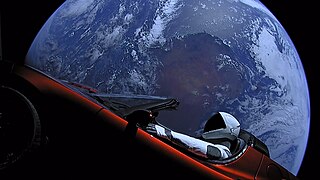
This article lists achieved spaceflight events in 2018. For the first time since 1990, more than 100 orbital launches were performed globally.
EKSKupol is a developing programme of Russian early warning satellites as a replacement for the US-KMO and US-K satellites of the Oko programme. The satellites are designed to identify any possible future ballistic missile launches, from outer space, and complement early warning radars such as the Voronezh. This gives advance notice of a nuclear attack and would provide information to the A-135 missile defence system which protects Moscow, as well as other Russian missile defense and counterattack resources. Six satellites are planned to be initially orbited. The first of these was launched on 17 November 2015 and as of May 2020, there are four in service.

Planet Labs, Inc. is an American private Earth imaging company based in San Francisco, California. Their goal is to image the entirety of the Earth daily to monitor changes and pinpoint trends.

EgyptSat 2 was Egypt's second remote sensing Earth observation satellite. It was built by the Russian RSC Energia and the Egyptian NARSS while the incorporated cameras and payload was developed by OAO Peleng and NIRUP Geoinformatsionnye Sistemy in Belarus.

Luch 5V is a Russian Luch relay satellite which will transmit data from the Russian Orbital Segment of the International Space Station, and from other satellites in low Earth orbit. It currently is stationed in the 95° East geosynchronous orbit slot of the Luch network.
AngoSat 1 was a geostationary communications satellite operated by Angosat and built by the Russian company RKK Energia. It was the first communications satellite of Angola, designed for a 15-year mission to deliver television, internet, and radio services to Angola and other territories. The satellite suffered a power problem in the first hours of flight and lost contact with ground control. After the power problem, contact was established with the satellite, but ultimately the satellite did not recover, and contact was lost permanently 3 days into the mission. After repeated failures to establish contact in the following weeks/months, the satellite was declared lost. Russia will build a replacement satellite called AngoSat 2 to be delivered in late 2019.
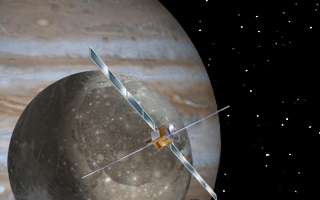
This article documents expected notable spaceflight events during the year 2022.

Soyuz MS-14 was a Soyuz spaceflight to the International Space Station. It carried no crew members, as it was intended to test a modification of the launch abort system for integration with the Soyuz-2.1a launch vehicle. It launched successfully on 22 August 2019 at 03:38 UTC. It was the first mission of the Soyuz crew vehicle without a crew in 33 years, and the first ever unpiloted mission of Soyuz to the ISS.